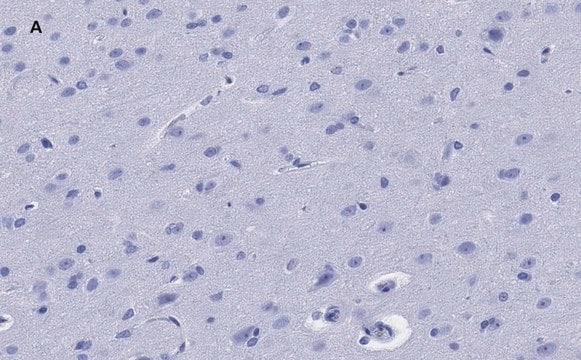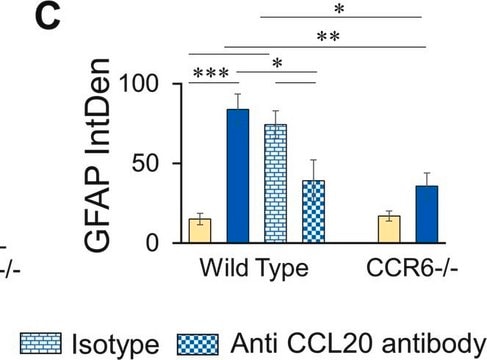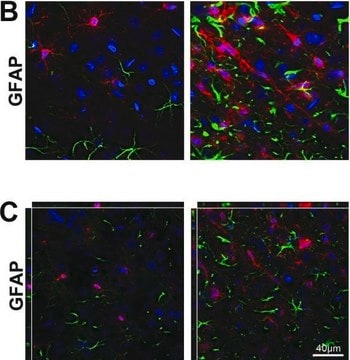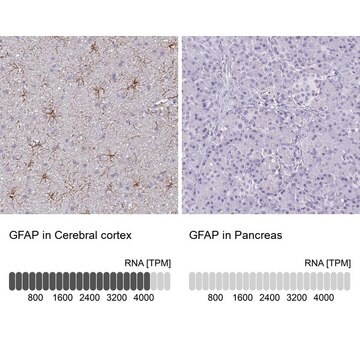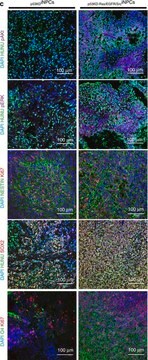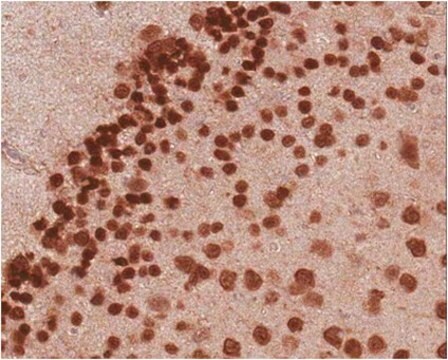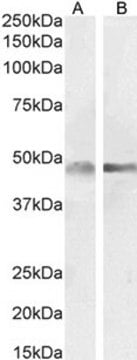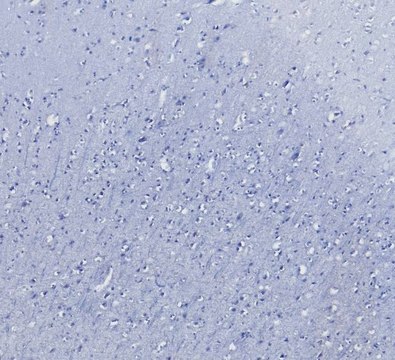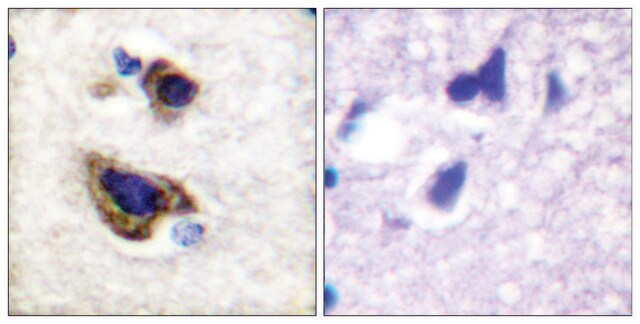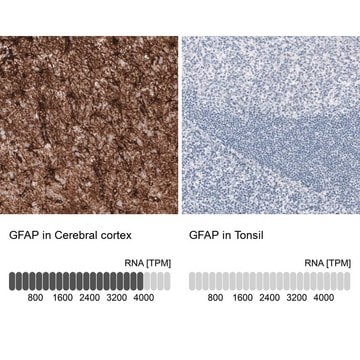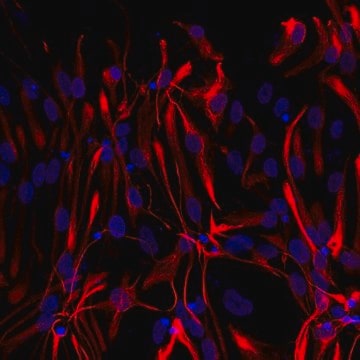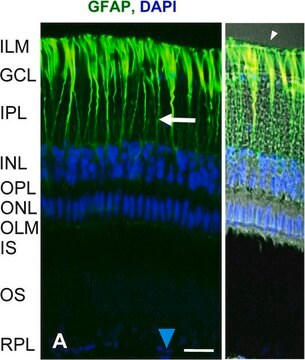AB5804
Anti-Glial Fibrillary Acidic Protein Antibody
CHEMICON®, rabbit polyclonal
Synonim(y):
glial fibrillary acidic protein
About This Item
Polecane produkty
Nazwa produktu
Anti-Glial Fibrillary Acidic Protein (GFAP) Antibody, serum, Chemicon®
pochodzenie biologiczne
rabbit
Poziom jakości
forma przeciwciała
serum
rodzaj przeciwciała
primary antibodies
klon
polyclonal
reaktywność gatunkowa
human, bovine, canine, rat
producent / nazwa handlowa
Chemicon®
metody
immunocytochemistry: suitable
immunohistochemistry (formalin-fixed, paraffin-embedded sections): suitable
western blot: suitable
numer dostępu NCBI
numer dostępu UniProt
Warunki transportu
dry ice
docelowa modyfikacja potranslacyjna
unmodified
informacje o genach
human ... GFAP(2670)
Opis ogólny
Specyficzność
Immunogen
Zastosowanie
Representative images from a previous lot.
Immunocytochemistry:
A 1:1,000 dilution of a previous lot was used in Immunocytochemistry.
Neuroscience
Neuronal & Glial Markers
Jakość
Immunohistochemistry(paraffin) Analysis:
GFAP (IHC2078) staining of Human Brain. Tissue pretreated with Citrate Buffer, pH 6.0. Pre-diluted polyclonal antibody, using IHC-Select Detection with HRP-DAB. Glial cells stain strongly (brown).
Optimal Staining with Citrate Buffer Epitope Retrieval: Human Brain
Opis wartości docelowych
Powiązanie
Postać fizyczna
Przechowywanie i stabilność
Handling Recommendations: Upon receipt, and prior to removing the cap, centrifuge the vial and gently mix the solution. Aliquot into microcentrifuge tubes and store at -20°C. Avoid repeated freeze/thaw cycles, which may damage IgG and affect product performance.
Komentarz do analizy
Mouse brain tissue, rat astrocytes, rat neurons.
Informacje prawne
Oświadczenie o zrzeczeniu się odpowiedzialności
Nie możesz znaleźć właściwego produktu?
Wypróbuj nasz Narzędzie selektora produktów.
Kod klasy składowania
10 - Combustible liquids
Klasa zagrożenia wodnego (WGK)
WGK 1
Temperatura zapłonu (°F)
Not applicable
Temperatura zapłonu (°C)
Not applicable
Certyfikaty analizy (CoA)
Poszukaj Certyfikaty analizy (CoA), wpisując numer partii/serii produktów. Numery serii i partii można znaleźć na etykiecie produktu po słowach „seria” lub „partia”.
Masz już ten produkt?
Dokumenty związane z niedawno zakupionymi produktami zostały zamieszczone w Bibliotece dokumentów.
Klienci oglądali również te produkty
Produkty
ReNcell neural progenitors are immortalized human neural stem cell lines that can differentiate into neurons, astrocytes sand oligodendrocytes.
Protokoły
Step-by-step culture protocols for neural stem cell culture including NSC isolation, expansion, differentiation and characterization.
Nasz zespół naukowców ma doświadczenie we wszystkich obszarach badań, w tym w naukach przyrodniczych, materiałoznawstwie, syntezie chemicznej, chromatografii, analityce i wielu innych dziedzinach.
Skontaktuj się z zespołem ds. pomocy technicznej
